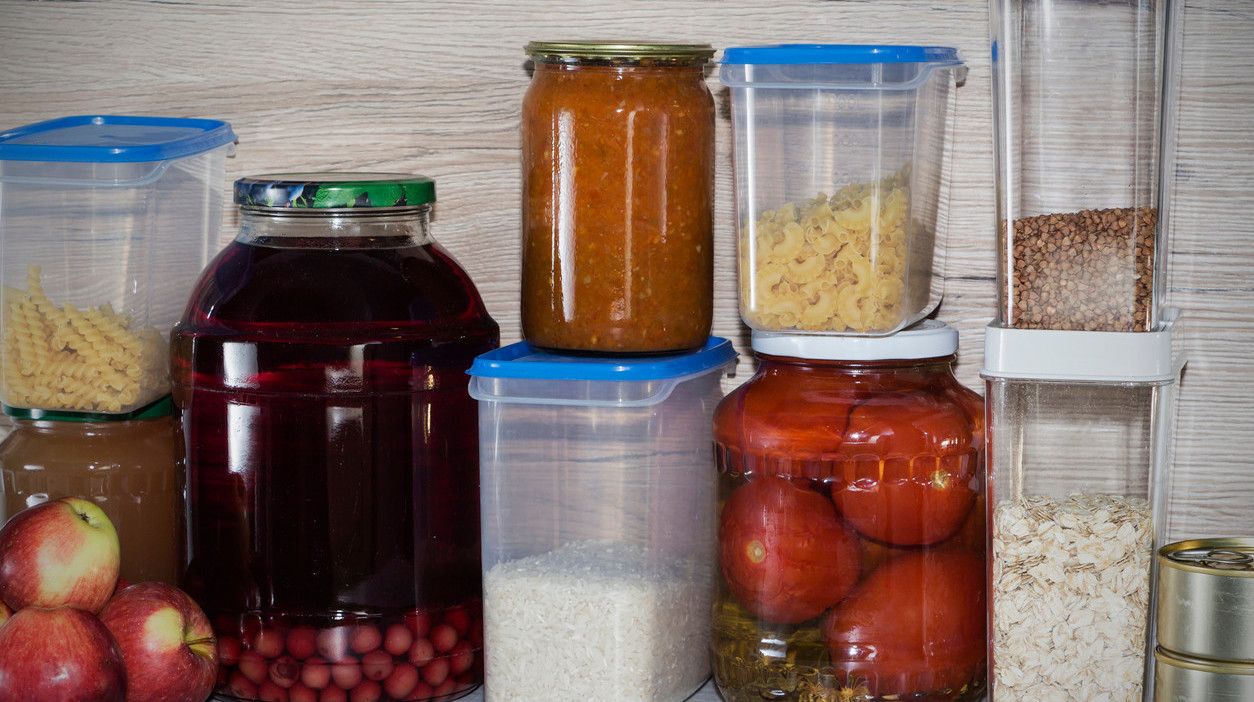We Present, Without Panic, Some Tips For Stockpiling Food
We may receive a commission on purchases made from links.
The spread of coronavirus has begun impacting more and more aspects of daily life in the U.S.—but only on a voluntary basis. There's no top-down government restrictions on travel or large gatherings (yet), and many big events like conferences and concerts are letting the attendees themselves decide whether to risk exposure. With no containment plan firmly in place, many people are wondering: Am I responding rationally to this situation? This is especially true of those considering a self-imposed quarantine, and people who've decided to stockpile some food for potential widespread quarantine.
As long as these decisions are being driven by caution over panic, then there's no harm in being prepared—it's all about taking the right steps. It's worth pointing out, for example, that there's a difference between stockpiling supplies and hoarding them. Don't clear the Costco shelves of more toilet paper than you could use in five lifetimes or canned goods that you know good and well you'll never eat. Instead, you can follow some government guidelines for stockpiling food for emergencies; these guidelines were designed to prepare for natural disaster, bioterrorism, and other non-coronavirus-specific situations, but many of the tips are useful no matter why you might be sticking close to home.
Ready.gov, the emergency preparedness website, has a list of suggested food supplies to stock your pantry with. Something notable about this list is that you might already have a number of these items on hand, meaning you don't have to build your stockpile from scratch. (And several of these staples are relatively cheap.)
- Ready-to-eat canned meats, fruits, vegetables, and a can opener
- Protein or fruit bars
- Dry cereal or granola
- Peanut butter
- Dried fruit
- Canned juices
- Non-perishable pasteurized milk
- High energy foods
- Food for infants
- Comfort/stress foods
- Store foods away from ranges or refrigerator exhausts. Heat causes many foods to spoil more quickly.
- Store food away from petroleum products, such as gasoline, oil, paints, and solvents. Some food products absorb their smell.
- Protect food from rodents and insects. Items stored in boxes or in paper cartons will keep longer if they are heavily wrapped or stored in waterproof, airtight containers.
Since this list is designed to account for emergencies involving a lack of electricity and/or running water, Ready.gov doesn't touch on frozen foods—but assuming a continuation of those things during a self-imposed quarantine, it might be worth it to stock up on frozen vegetables as well as other items that can be thawed out and stay good for several days thereafter, such as tortillas and bread.
Though non-perishable milk is on the above list, perishable milk is also freezable, and it lasts for approximately a month in the freezer. Here's the best way to freeze your milk, according to a press release by the American Dairy Association North East:
1. Consider the space you have in your freezer. If you don't have room for a number of large milk gallons, think about stocking up on half gallons and quarts of fresh milk.
2. Drink some first. When milk freezes, it expands. So, drink enough from each container to leave a little bit of room for the milk to expand safely when it freezes. Leave one to two inches of empty space in each container.
3. Thaw your frozen milk in a refrigerator, not at room temperature.
4.After your milk is thawed, give it a good shake before drinking.
There seems to be a consensus among trusted sources that you don't need to build up a stockpile of fancy dehydrated foods or MREs; these are expensive, and regular canned food and shelf-stable grains serve the same purpose as any opportunistically branded disaster astronaut food. The normal stuff from the grocery store is going to taste better, too. Just make sure your can opener is shipshape.
The CDC also has some tips on storing your food during times of emergency (and at all times, really):
